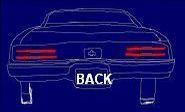 |
 |
|
 |
 |
 |
 |
 |
 |
 |
 |
 |
 |
 |
 |
 |
Respirator: |
| |
| A respirator is a filtration device. It filters the surrounding atmosphere for known particulate/contaminants.
There are many different styles and sizes of respirators available. The most common half mask respirator is designed with replaceable cartridges creating a variety of protection levels. |
 |
| Deciding
if a half mask respirator will protect you depends on your environment.
Half mask respirators will only protect you if the atmosphere contains
20% oxygen. Respirators DO NOT produce oxygen. Respirators just filter out
the particulate/contaminants. Other factors depend on particulate/contaminant
concentrations. Called the permissible exposure limit (PEL). The
cartridge is designed with absorbent material to catch specific
particulate/contaminants and is rated for a specific PEL. A prefilter
can be used on some models to catch larger particles. This can give
the cartridge a little longer life.
ALWAYS
refer to the manufactures recommendation when selecting the cartridge. |
 |
| Fitting a respirator to the face is the most
important thing next to the correct cartridge choice. You need to have an air tight seal or the respirator will leak.
That means no:
Facial Hair
Eyewear
Deep Facial Scars
Missing Teeth
Jewelry
or anything that breaks the seal |
 Chart is not a substitute for fit testing as required by OSHA in 29 CFR 1910.134
and CSA Z94.4-02 Chart is not a substitute for fit testing as required by OSHA in 29 CFR 1910.134
and CSA Z94.4-02 |
| Following the chart above will give you sizing information.
Take the measurements:
From the chin to the bridge of the
nose (A).
Then the length of the lips (B).
Intersect the measurements on the chart to get the
sizing information |
 |
Once sized for the respirator you'll need to perform
a fit test.
This should be performed in an uncontaminated area. |
| Positive Pressure Check: Put on the mask.
Tighten straps evenly to get a snug fit.
Place palm of hand over exhalation valve opening.
Breathe out alittle.
Mask should swell and not leak. |
 |
 |
Negative Pressure Check: With the mask still on.
Cover the inhalation valves with the palms
of both hands
Breathe in alittle.
Mask should collapse and hold the seal. |
| If either test produces a leak, tighten straps evenly and perform test again.
If you can not get a satisfactory test try a different size mask. |
| Once you have a satisfactory test, install cartridges that will filter out ammonia smelling
salts. The kind you find in a first aid kit. |
| Vapor Check: Put on the respirator (cartridges installed).
Perform positive and negative pressure checks.
With satisfactory tests break open the smelling salts.
Move the smelling salts around the face to mask seal.
You should not smell the salts.
Move your head left-right-up-down while moving
smelling salts around face to mask seal.
You should not smell the salts.
If you do not smell the salts the seal is good.
Remove the respirator and pass the smelling salts
under your nose.
It should make you pull away.
If the test is satisfactory you're good to go.
If not check respirator for defects and try again. |
 |
| NEVER USE A RESPIRATOR IF YOU CAN'T PASS ALL THREE TESTS!!! |
| As with any tool proper maintenance and cleaning is necessary. |
|
 |
Life of the cartridge will depend on the PEL. Higher
particulate/contaminants = shorter life.
Before each use you should disassemble and clean
the respirator while inspecting for defects.
I use a cotton ball with isopropyl alcohol to clean mine.
A positive and negative pressure check should be
accomplished prior to entering a hazardous area. |
| You
are now ready to filter out the chili vapors! |
|
| |
| Show your support for The Poorman's Off Chassis Restoration.com.
Purchase a T-Shirt today. |
| |
| |
| |




 Chart is not a substitute for fit testing as required by OSHA in 29 CFR 1910.134
and CSA Z94.4-02
Chart is not a substitute for fit testing as required by OSHA in 29 CFR 1910.134
and CSA Z94.4-02 







 Chart is not a substitute for fit testing as required by OSHA in 29 CFR 1910.134
and CSA Z94.4-02
Chart is not a substitute for fit testing as required by OSHA in 29 CFR 1910.134
and CSA Z94.4-02 


